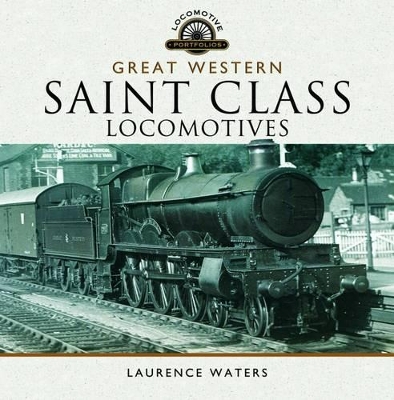Locomotive Portfolios
3 total works
Churchward's 2 cylinder Saint Class 4-6-0s were arguably one of the most important locomotive developments of the twentieth century. The seventy-seven members of the class were so successful that most of the other railway companies in this country used the same 2 cylinder 4-6-0 formula in the design of their own mixed traffic locomotives. Over the years the Saints saw a number of modifications, with many of the class passing into BR ownership. The last member of the class, no. 2920 Saint Martin, was withdrawn from service in 1953 and was sadly not preserved. However, the Great Western Society are now constructing a replica Saint at Didcot Railway Centre. Numbered 2999 it will be named Lady of Legend. In this book author Laurence Waters charts the remarkable history of the class from the construction of the prototype Saint at Swindon in 1902, right through to the final withdrawals in 1953. Using many previously unpublished black and white photographs, accompanied by informative captions, each member of the class is illustrated.This book should appeal to those interested in the history of Great Western Locomotive development as well as modellers of the Great Western and Western Region.
The gradual growth of the railways in Britain during the late nineteenth and early twentieth centuries, in both passenger and freight traffic, saw the requirement for a more powerful and versatile type of motive power - mixed traffic locomotives. The construction of Great Western Halls and Modified Halls gave the Great Western a superb all round locomotive, and for thirty-six years they operated passenger and freight services over the Great Western, and later Western Region. The Hall class were among the largest mixed traffic steam locomotives that ran throughout this country, and this is the first serious volume to focus on them in fifty years. The book charts the history of both classes, from their construction and withdrawal, to their design, development and eventual scrapping. With over 200 black and white, and colour photographs, accompanied by informative captions, many members of the class are illustrated. It will appeal greatly to those interested in the history of Great Western Locomotive development.
The 30 Manor class 4-6-0s were designed by CB Collett in 1938, and built by the Great Western, and the Western Region at Swindon in two batches, 20 in 1938/9, and 10 in 1950. In order to save money the first 20 members of the class were built using parts from withdrawn 4300 class 2-6-0s, and were coupled to refurbished Churchward 3,500 gallon tenders. The lighter 4-6-0s Manors were given 'blue' route classification which allowed them to work over many secondary lines. The construction of the Manors completed the final stage of Collett's plan to provide a full range of 4-6-0 tender locomotives for Great Western passenger services. Over the years the Manors saw extensive use on services in the South West, West Wales and ex-Cambrian Lines in North Wales. They provided motive power for both the 'Pembroke Coast Express' and the 'Cambrian Coast Express'. Many of the class lasted to the end of steam traction on the Western Region, with the last examples being withdrawn in November 1965. Remarkably of the original 30 members of the class no fewer than 9 have survived.In this book, author Laurence Waters charts the history of the class from their construction at Swindon in 1938, right through to the final withdrawals in 1965.
Using many previously unpublished black and white, and colour photographs, accompanied by informative captions, each member of the class is illustrated. This book should appeal to those interested in the history of Great Western Locomotive development as well as modellers of the Great Western and Western Region.
Using many previously unpublished black and white, and colour photographs, accompanied by informative captions, each member of the class is illustrated. This book should appeal to those interested in the history of Great Western Locomotive development as well as modellers of the Great Western and Western Region.

